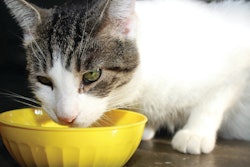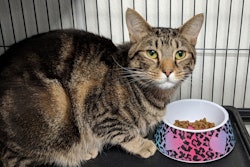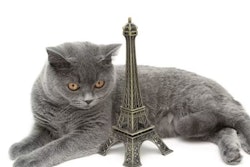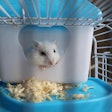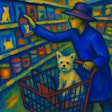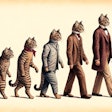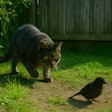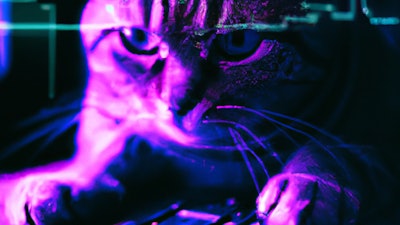
During the Industrial Revolution, machines largely replaced animals as sources of power. Tractors took the place of oxen. Internal combustion engines made carriages auto-mobile while putting horses out to pasture. Donkeys no longer turn millstones in granaries where better mousetraps take the place of mouser cats. Video cameras and alarm systems have allowed guard dogs to go soft as fur babies. Could a further evolution of the machines relegate even pampered pets to history?
Prophets of industry focused on artificial intelligence in 2023, as ChatGPT and other artificial intelligence programs zoomed into the mainstream, just as video conferences did during the pandemic. Post-pandemic labor shortages enticed business leaders to look toward AI-animated robots as replacements for human workers who had found better ways to make money than flipping burgers for minimum wage. So far, AI doesn’t seem to have replaced many people. Even without AI, automation hasn’t fully replaced humans, although many livelihoods have been lost to mechanization. In grocery stores and retail locations, where self-checkout has shortened queues and allowed widespread shoplifting, people are still required to tend the finicky electric eyes of machines. However, horse-drawn buggies rarely appear in the parking lots of those stores, except in Amish areas. Machines managed to completely replace animal labor in most situations, sniffer dogs in airports notwithstanding.
People look to pets for more than muscle power and keen senses though. Pets provide companionship and provide screens upon which people project their own needs for love and acceptance. People continue to dehumanize each other, as the daily news proves, while humanizing dogs, cats, parrots and even ball pythons. That humanization and anthropomorphizing of pets has proven profitable. My job and that of tens of thousands more around the world attest to that. The premiumization of pet food relies on people’s love of their pets and acceptance of these companion animals as family members. I’m no exception to this phenonomenon. My writing partner, Tigra the cat, is at my side right now.
Humanization fuels premiumization. Premiumization fuels continued revenue growth in the pet food industry, despite stagnating volume growth and declining pet ownership rates in the U.S. following the pandemic surge. Rampant inflation hasn’t stopped the success of the pet food industry this year either, but perhaps another top topic of 2023 poses a larger threat than most in the industry imagine.
Advances in robotic pets
Robots have already begun replacing flesh-and-blood fur babies. Synthetic pets help those who couldn’t otherwise have a furry companion. Ultimate Pet Nutrition sponsored Pets for Vets, a nonprofit organization that finds homes for dogs and cats in shelters with U.S. Armed Forces veterans. Not all of those pets were biological. Pets for Vets has provided dozens of robotic dogs or cats for veterans whose circumstances precluded a live pet.
“The pets provide comfort, companionship and fun,” Ann Black, president of Pets for Vets’ board of directors, said in a previous Petfood Industry article. “Because they are interactive, they engage the veteran similarly to a live animal. They help calm anxiety and soothe in stressful situations. Petting a robotic animal works similarly to a live animal. During a period of stress, the act of petting can decrease stress hormones, lower blood pressure, release oxytocin, increase other neurochemicals associated with relaxation, and regulate breathing for the veterans.”
Robotic pets have come a long way from the Tamagotchis and Furbies of my youth. Petoi’s Bittle X robotic dog responds to more than 35 voice commands with the ability to custom program 10 more. The palm-sized robotic Rover uses nine servos to run, flip and otherwise caper. Open-source, blockchain-based, C++ and Python programming languages allow owners to program their pooches via Bluetooth and WiFi. Optional sensors allow the Bittle X to visually track owners’ movements so robo-retrievers can follow objects and respond to hand signals.
Along with teaching artificial dogs new tricks, owners of these synthetic pets don’t have to deal with some of the downsides of biological companion animals. Robots don’t defecate, urinate, vomit or cough up hairballs. Machines don’t chew sneakers or scratch furniture. When a person goes on a long trip, a cyber-cat can simply power off. Like Wilford Brimley in “Cocoon,” robot pets will never get sick, won’t get any older and won’t ever die. Even if the battery does die, it can be recharged.
However, most robot dogs have yet to achieve the cuddle factor of living pets. The Bittle X is hard plastic with a head that looks like a statue of Anubis, ancient Egypt’s jackal god of funerals. On the other hand, the fluffy robot animals distributed by Pets for Vets lack the dynamism of Bittle X or its cat cousin Nybble. Eventually though, someone will put a furry covering and memory foam coating on a highly functional robot, like Boston Dynamics’ Spot.
Once AI partners with a cuddly robot, the pet industry may face a real challenge. Like an android, modeled after a human, a zoodroid could take the best qualities of pets, yet never pee on the couch or need boarding during vacation. People could work late or take the kids on one more errand without worrying that the dog was suffering and crossing his legs. Beyond the biological necessities, a doe-eyed, fluffy robot could learn exactly what most amuses its owner by trying millions of behaviors learned from living or fictional animals. What's more, it could perform chores around the house. Even dogs only vacuum up lost French fries, while a zoodroid could clean the rug while you were away like a Roomba.
As artificial intelligence and robotics advance, the idea of synthetic pets doesn’t seem so far-fetched. For example, computer scientists developed a program called AutoML-Zero, reported Science. This software develops artificial intelligence programs without any human help by using principles of biological evolution. Computer scientists put artificial intelligence programs to use solving complex algorithms needed to mimic human intelligence. That made me wonder, could an AI learn to be a cat?
A few years ago, scientists at MIT developed a psychopathic AI, named Norman. To develop artificial intelligence, humans use data to teach the machine certain mathematical rules and processes, or algorithms. While Norman Bates was turned Psycho by his mother, Norman the AI went mad after being raised on a steady diet of Reddit’s dark underbelly. The resulting troll AI interpreted Rorschach inkblots in ways that would have scared Rorschach from “The Watchmen.” For example, a blot that looks like a photo of a bird to another AI, looked like a man getting pulled into a dough machine to Norman. (However, Norman didn’t cackle, “He’s rolling in dough,” or “I really kneaded that,” as a true super-villain would have.)
Most cats aren’t quite that vindictive towards humans. To the contrary, the internet and social media abound with memes and gifs of adorbs-able kittahs. Could computer scientists use all the cute cat videos on YouTube to create an ultra-adorbs AI that would control a synthetic super pet?
Tamagotchis and other digital pets swept the world in the late 90s. People developed real senses of responsibility and attachment to those beeping lumps of plastic. A realistic synthetic pet could elicit even more love. The uncanny factor might be a problem, as with early computer-generated images. A slightly fake-looking dog would be creepy, like the humans in the first Toy Story. Exotic or fantastic animals might solve this problem since people wouldn’t have a frame of reference for realism. No need for a Jurassic Park, people could have pet veloci-robots complete with door-opening abilities. Zoodroid designers could exaggerate neotenic features to make a synthetic pet so cute it would shame baby Yoda.
Could a Furby-1000 terminate the pet food industry? It may seem far-fetched, but many odd, unexpected technologies have changed the world. Today’s synthetic pets may seem like clunky novelties, but so did early horse-less carriages and moving pictures.



